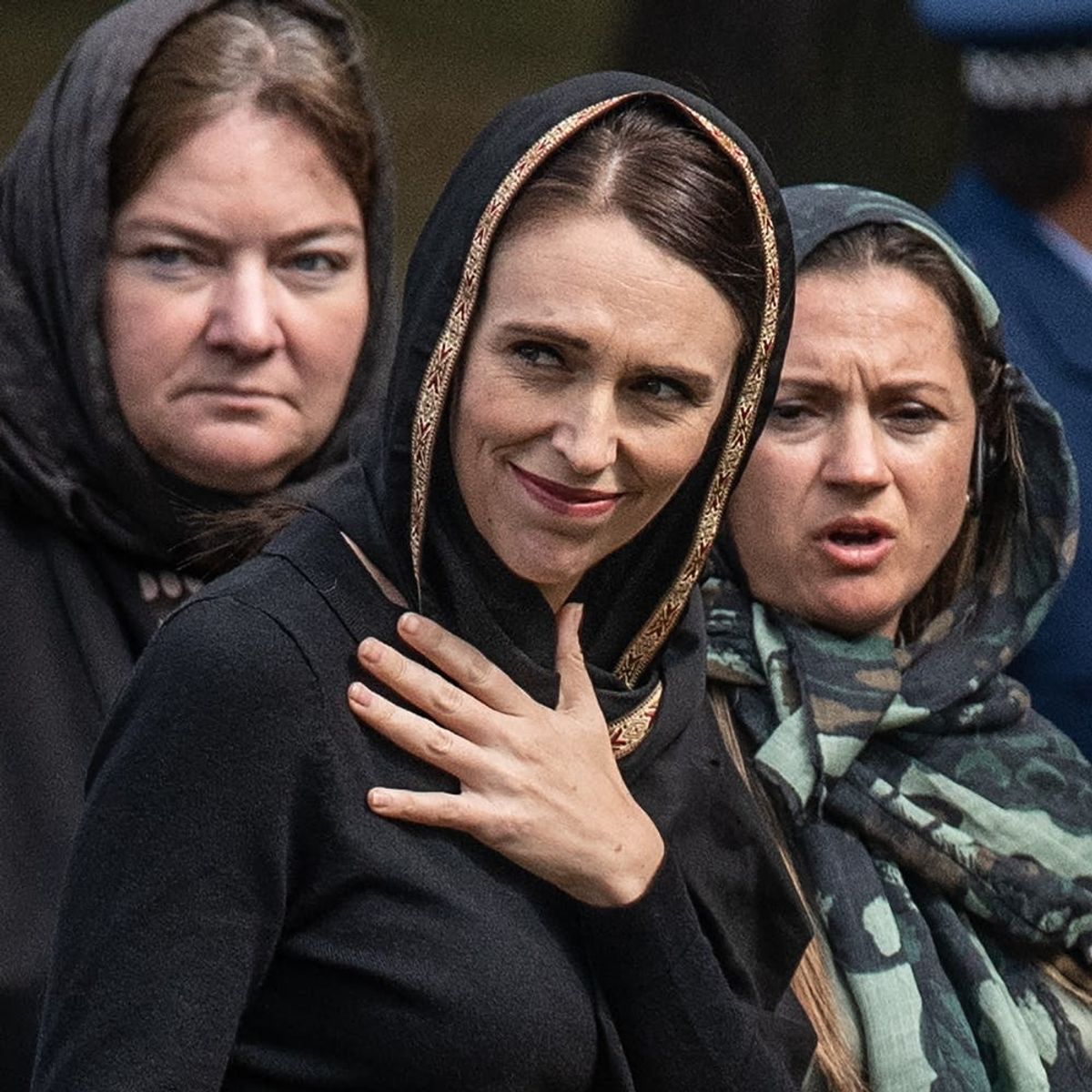It was a lesson in inclusivity, but not how you might think.
Here’s What Happened When New Zealand Women Wore Headscarves to Support Muslims

As Muslims and allies struggle to make sense of a horrific March 15 attack against two mosques in the city of Christchurch, New Zealand, the country’s prime minister, Jacinda Ardern, has been widely lauded for her leadership in the face of tragedy. On Friday, March 22, Ardern led women across the country in a solidarity effort that has since drawn praise and criticism in equal measure.
The demonstration was dubbed #HeadScarfForHarmony on social media and invited non-Muslim New Zealanders to don a headscarf for one day, a nod at the hijab worn by many Muslim women. Scores of women took part in the campaign and documented their efforts on Instagram and Twitter. Many others from around the world took note — and expressed wildly different reactions. The divergent responses from Muslim women, in particular, offer a powerful and necessary lesson in what it means to be inclusive.

“It’s fair to say that different Muslim women, who do wear the hijab and who don’t wear the hijab, have reacted very differently to this. And that’s absolutely normal. We’re not a monolith, and we get to disagree,” Fatima Ahdash, a PhD candidate at the London School of Economics, tells Brit + Co by phone.
“But,” Ahdash concedes, “with a sometimes very toxic online culture, it’s difficult to civilly disagree.”
Ahdash lives in the UK and wears a hijab. The New Zealand demonstration made her uncomfortable for reasons we’ll get to later, but she was even more troubled by the backlash she and other women of color received for sharing critical reactions on Twitter — particularly, she tells us, from Muslim men. Days later, the insinuation that there’s a right or wrong way to feel about the event still rubs her the wrong way.
“Differences are totally legitimate,” Ahdash tells us, the frustration detectable in her voice. “Lots of my friends have reacted very differently to this. That’s normal and that’s fine.”
Nazma Khan, the New York City-based founder of World Hijab Day, seems to be on Team Agree-to-Disagree. She tells Brit + Co by email that, while everyone is entitled to their opinion about the New Zealand headscarf demonstration, she was moved by the event.
“If the critics really took their time to read through the heartwarming stories of the women who took part in the NZ hijab demonstrations,” Khan tells us, “I’m sure that, deep down inside, they would appreciate it and perhaps change their mind — whether they admit it or not.”
She was especially struck by first-person accounts of participants that showed how the demonstration gave them a new understanding of Islamophobia. “Only when we walk in the shoes of others will we truly understand and appreciate their values and struggles,” Khan says. She hopes that the demonstrations changed people’s minds about the hijab, and made non-Muslims realize that the covering isn’t something to be afraid of.

But if we’re talking about differences in experience and opinion, it’s worth noting that some Muslim women are opposed to the hijab, itself, which of course colored reactions to last week’s headscarf campaign . Nasrin Afzali, an activist, tells us by direct message that the authoritarian hijab mandate of her native Iran has made it impossible for her to align the head covering with demonstrations of solidarity.
“As a woman born and raised in a religious autocracy, I experienced and witnessed how the hijab was used to control women’s bodies, removing them from or limiting their presence in the public sphere,” she says. Iran’s mandatory headscarf policy has been subject to repeated protests since the law was put into place 40 years ago, but the signification of the headscarf is different when it’s something women opt into by choice — which many women around the world do, for a panoply of reasons.
Most criticism of the demonstration has less to do with ideas about the hijab than about the approach to solidarity, itself. “All Muslims in New Zealand appreciate the sentiment,” reads an op-ed in the New Zealand news site Stuff, by an anonymous writer who self-identifies as a Muslim woman in New Zealand. “…But support does not have to look like this.”
The writer goes on to assert that “hijabs are not pieces of clothing to be worn as a costume or as a way to look cool or ‘woke’ in front of friends.”
Ahdash shares the writer’s view that Friday’s demonstrations did more to virtue signal, among its participants, than to make productive strides toward social harmony. She tells us that the headscarf solidarity day reminded her of other popular consciousness-raising initiatives, like sidewalk sleep-outs for homelessness, that center the would-be allies of marginalized communities instead of the communities, themselves. The intention is clearly well-meaning, but it’s also beside the point.

“The better way is the harder way,” she tells us. “It’s the long haul, confronting your lovely grandma and grandpa and their racist attitudes. It’s standing up for your colleagues who have experienced subtle but really damaging forms of racism and Islamophobia in the workplace. It’s about challenging your elected officials and the media and reaching out to your local Muslim women’s organization to see how you can lend them support.” The activism that makes a difference isn’t necessarily what attracts recognition or “likes” on social media, says Ahdash.
Solidarity is also about recognizing that different people have different perspectives. An inclusive society is one that understands that a label doesn’t say everything we need to know about a person’s lived experience, whether that label says “Muslim” or “woman,” a combination of these, or none of the above. Being an ally means stepping back, pushing ego aside, listening, and doing the work to ensure that everyone has a seat at the table.
(Photos via Kerry Marshall + Carl Court/Getty Images + Nazma Khan/ World Hijab Day)



















